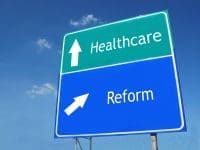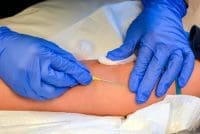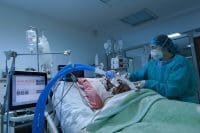In 2004 President George W. Bush set forth a goal of all persons having electronic health records (EHR) within 10 years. This goal seemed unachievable at the time, and in fact proved to be so, although 90% of hospitals and 80% of private offices did have some form of EHR by 2014.
In 2014 President Barack Obama furthered the cause by including in the American Recovery and Investment Act that public and private healthcare providers must demonstrate meaningful use of EHR in order to receive Medicare and Medicaid reimbursement.
Now in 2017 President Donald Trump, according to FierceHealthcare, brings new challenges of safety and security regarding individual participation in providing personal details to health care providers. President Trump, by promising to repeal the Affordable Care Act (ACA) and the privacy protections it affords, as well as promises of deportation for immigrants and Muslims, is causing concern amongst healthcare providers that individuals may withhold important medical information for fear of repercussions. Developing concise and extensive EHR can help facilitate the appropriate care of individuals as well as allowing for data collection and research to improve care across the health care continuum. Patients’ rights to privacy regarding the release of demographic and medical history must be continued and assured as an inalienable right. The healthcare industry must support the continuation of growth in the field of EHR and information technologies while assuring the privacy and protection of individual rights regarding the information provided.
Benefits of EHRs
The Office of National Coordinator (ONC) was created in 2004 to organize efforts to develop and advance information technologies, and in particular the use of EHR, to develop health information exchange systems and improve the delivery coordination of healthcare within the United States. Before 2004, and the establishment of the ONC, medical records were paper charts that provided little in the way of continuity of care and collaboration amongst health care provides.
The initial goal of establishing an EHR was to improve the safety of healthcare as well as streamlining care delivery. A fully developed EHR allows for improved data collection, shared patient information on screenings and tests amongst providers to allow for early detection of disease, as well as monitoring disease progression and the success of treatments. Unlike personal paper charts, shared EHR contains documentation from differing specialties providing a more detailed picture of an individual and their state of health. An additional significant benefit to the use of EHR is the reduction of transcription errors where handwriting is illegible. As technology has advanced, the use of EHR has as well, patient care can now be documented and coordinated from physician offices through ambulance treatments, acute care stays to nursing homes and rehabilitation facilities.
In addition to the impact of EHR on an individual’s health care, it has also provides information on the spread of disease and identification and prevention of healthcare related illness and injury. In the past year, we have seen the Zika virus spread to United States, and have been able to track both incidence and outcomes through data obtained from EHR. The Centers for Disease Control and Prevention (CDC) has also been able to more accurately track the onset and spread of the flu virus as well as vaccination statistics. The advancement of technologies related to the EHR has branched into electronic prescriptions, or EScribing, which has been instrumental in the identification and reduction of narcotic and sedative abuse. Finally, the Centers for Medicare & Medicaid Services has been able to more accurately track data on pressure ulcers and financially penalize facilities where they occur, thereby encouraging improvement in patient safety and care.
Security and EHRs
Since the implementation of EHR, there have been concerns for the security and confidentiality of patient information contained in those records. President Obama signed the Patient Protection and Affordable Care Act (PPACA) in 2010. This act requires healthcare providers and testing facilities to ensure that shared information and communications are secure and the privacy of an individual is protected. The Health Insurance Portability and Accountability Act outlines the appropriate handling of personal information. Failure to adhere to, through a lack of diligence in protecting information or willful distribution of information, leaves facilities and individuals open to censure and escalating fines.
Numerous obstacles are known to exist in the protection of information contained in an EHR such as the lack of consistency of systems and the number of subcontractors that may be involved in the development and maintenance of systems. New technologies such as telemedicine, remote charting, digital communication devices and cloud storage systems open up new vulnerabilities in the security of health information.
President Trump, and his promise to change society in general and laws regarding immigration and the ACA in particular, have caused deep concern amongst healthcare providers and individuals who fear decimation of their personal information for reasons other then healthcare. In the past, cyber security breaches may have led to identify theft or medical fraud, but now they may compromise a persons’ physical and or personal safety.
The effect of erroneous medical information, including omissions or use of fake names, could impact a person’s care by not providing information such as travel history, past medical history, previous procedures, allergies, medication reconciliation, or blood types. The impact could be life threating to the individuals if delayed, contraindicated or inappropriate care was provided. The impact of withheld information may put healthcare workers and the public at large in danger if an individual may not be willing to provide travel information that could identify exposure to a communicable disease prevalent in that particular area. In addition to immediate physical harm, incomplete and/or inaccurate data may cause erroneous reporting that could skew research data that may impact the advancement of disease recognition and treatment in the future.
Another area noted by the ONC as making our EHR systems vulnerable to cyber attack is that they do not have seamless, coordinated functional ability. Within the PPACA are requirements that health care providers look to change from fragmented health care documentation systems that operate independently to more seamless systems that operate across the healthcare continuum. The development of a more universal system could facilitate communication, coordination, and implementation of high-quality health care.
Advancements in healthcare technologies have done much to improve coordination and implementation of patient care. EHRs have made the collection of data to identify trends, improve disease recognition and research more accessible then ever before. Data collection has also identified patient safety issues, and allowed for the tracking of patient injuries related to these issues, which in turn has forced health care facilities to be more proactive in the prevention of such injuries. Another positive aspect of EHR and data collection is the ease of which information can be shared amongst health care providers and that open collaboration has lead to advancements in research and research projects as well as best practices.
Delivery of unbiased care
A negative consequence of EHR systems is that confidentially of personal information could be compromised. Past presidents have set forth goals of achieving a seamless EHR system for the future that will improve care and protect personal privacy. The current administration has caused concern, and I believe rightly so, over patient privacy. The president has gone to great lengths to assure the public that the ACA will be repealed, which has led to concerns over the individual protections it affords. In addition, the new isolationist policy, including discriminatory practices against individuals of foreign descent and religious beliefs, has caused feelings of fear and distrust amongst individuals who may be targeted. It is up to the healthcare community to continue our unbiased non-political care of individuals regardless of race, color, or religion. As a nation we should be above this and as healthcare providers we must be above this.
Pamela Germinaro is a clinical nurse manager for ASU/PACU at a regional New York Hospital. The views expressed here are her own.
Selected references
Ardito S C. Electronic health records. Online Searcher. 2014;38(6):38-44.
Conn J. Bush’s goal. U.S. won’t meet universal EHR deadline, many say. Modern Healthcare. United States. 2014;44(8):24.
HealthIT.gov. Newsroom about ONC. 2016. www.healthit.gov/newsroom/about-onc.
Hirsch M. Hospital impact: Trump policies could escalate EHR privacy fears, threaten quality and patient safety. FierceHealthcare. 2017. www.fiercehealthcare
Key D, Ferneini E M. Focusing on patient safety: The challenge of securely sharing electronic medical records in complex care continuums. Connecticut Medicine. 2015;79(8):481-485.


















